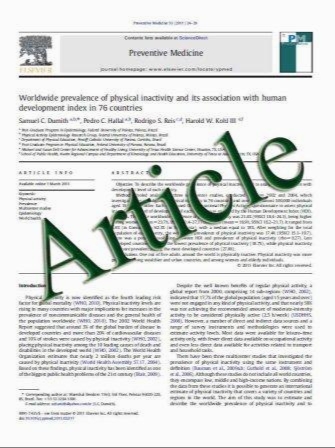Serum Antibodies to Mycobacterium avium Subspecies paratuberculosis Combined with Anti-Saccharomyces cerevisiae Antibodies in Crohn’s Disease Patients: Prevalence and Diagnostic Role
- نوع فایل : کتاب
- زبان : انگلیسی
- مؤلف : Franck Biet Laurent Gendt Eric Anton Eric Ballot Jean-Pierre Hugot Catherine Johanet
- چاپ و سال / کشور: 2011
Description
Background Because Mycobacterium avium subspecies paratuberculosis (MAP), the etiologic agent of Johne’s disease in ruminant, has been identified in the mucosal layer and deeper bowel wall in CD patients, the seroactivity against MAP may define a distinct subset of patients requiring individual treatment. The aim of this study was to assess the performance of anti-MAP antibodies in the diagnostic strategy for CD. Methods Two hundred seventy-two individuals were included: 81 with CD, 36 with ulcerative colitis, 35 with coeliac diseases and 120 healthy blood donors. Anti-MAP were detected by ELISA using a purified protein derivative from MAP. Anti-Saccharomyces cerevisiae antibodies (ASCA) were detected by indirect immunofluorescence. Results The sensitivity and specificity of anti-MAP and ASCA for CD diagnosis were similar (sensitivity: 0.33 ± 0.10 and 0.31 ± 0.10; specificity: 0.96 ± 0.03 and 0.98 ± 0.02, respectively). A combination of these two tests enabled an increase in sensitivity (0.53 ± 0.10), although specificity remained unchanged (0.95 ± 0.04). No correlation was found between anti-MAP positivity and clinical features such as age at onset and the duration of CD, disease location, or intestinal complications. Conversely, extra-intestinal manifestations of CD were statistically associated with a positivity of anti-MAP (48% vs. 24%, P = 0.028), mostly with respect to arthritis (44.5% vs. 13%, P\0.002). Interestingly, anti-MAP and ASCA were also found in an active form of coeliac disease. Conclusion Our results suggest a complementary role of ASCA and anti-MAP for CD diagnosis and a possible common role of bacteria in small intestinal mucosal damage in CD and coeliac disease.
Dig Dis Sci (2011) 56:1794–1800 DOI 10.1007/s10620-010-1523-8 Received: 22 July 2010 / Accepted: 9 December 2010 / Published online: 8 January 2011


